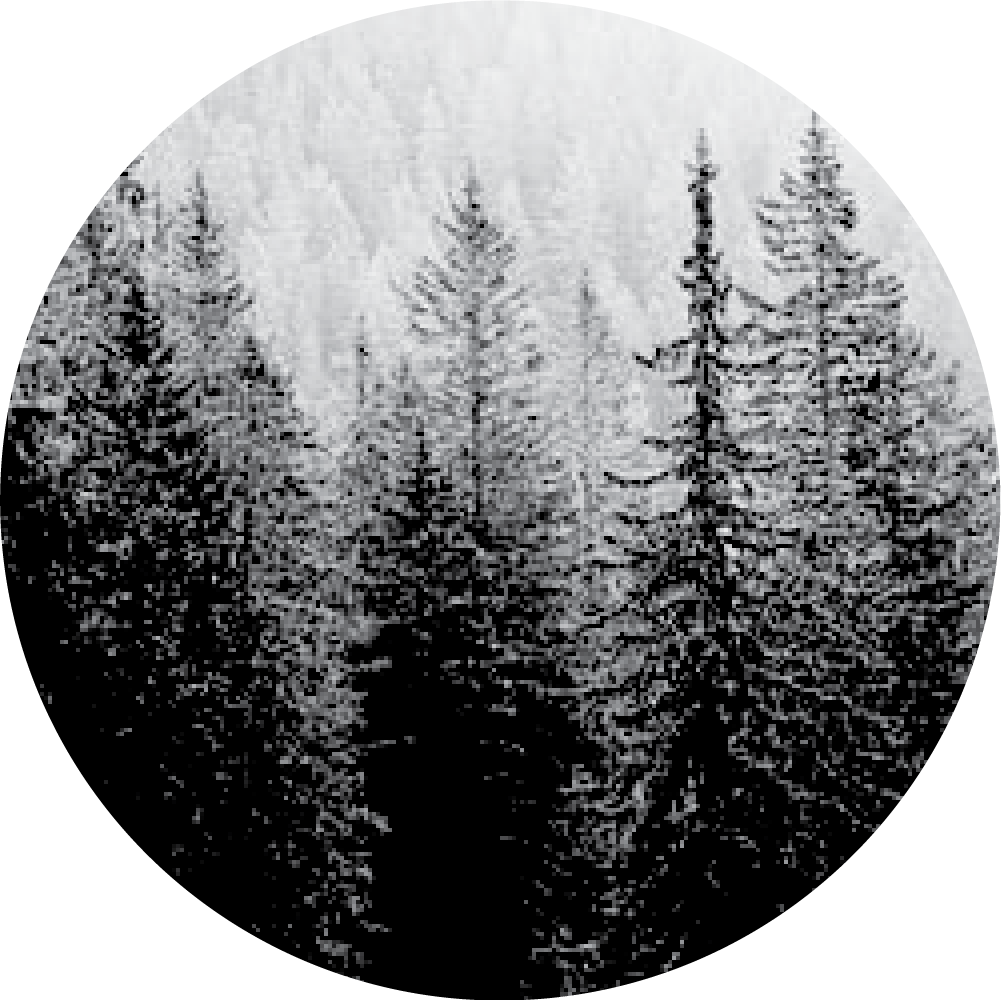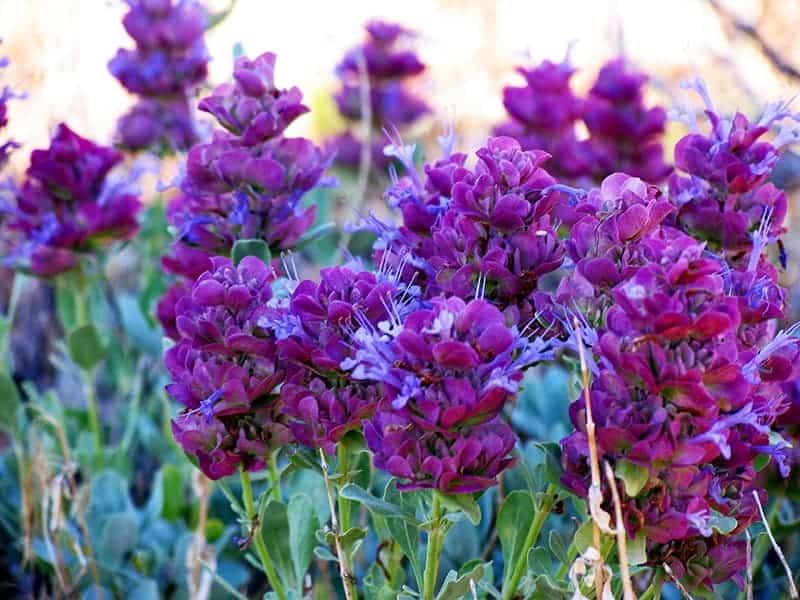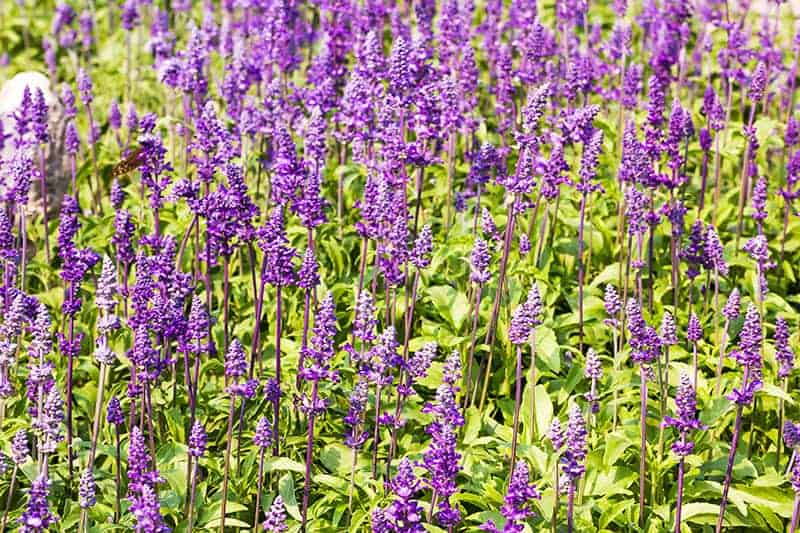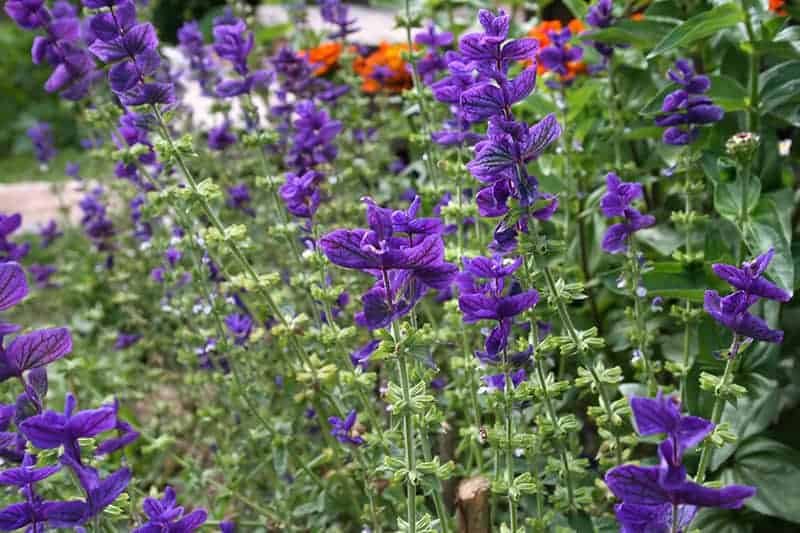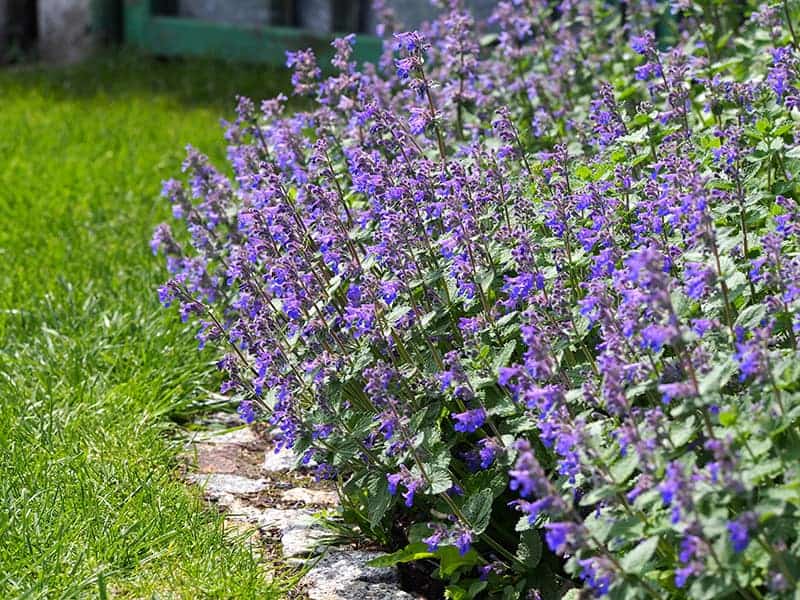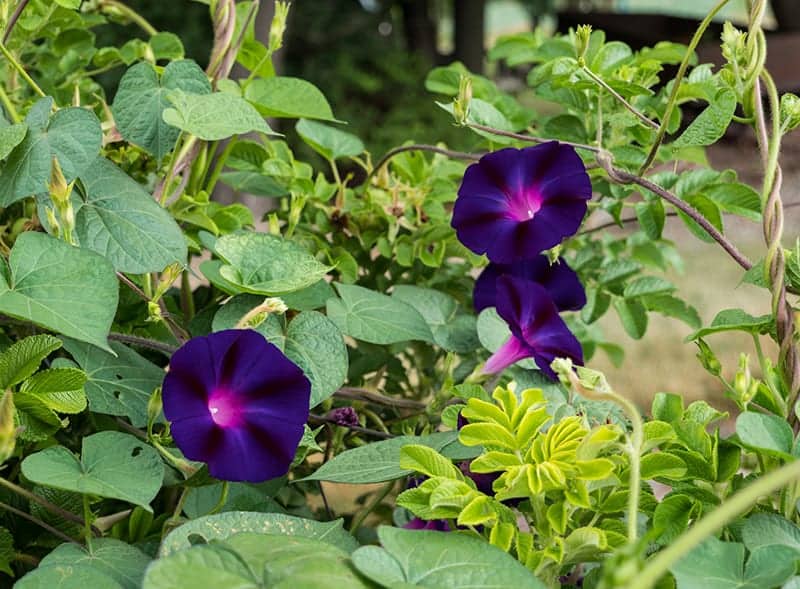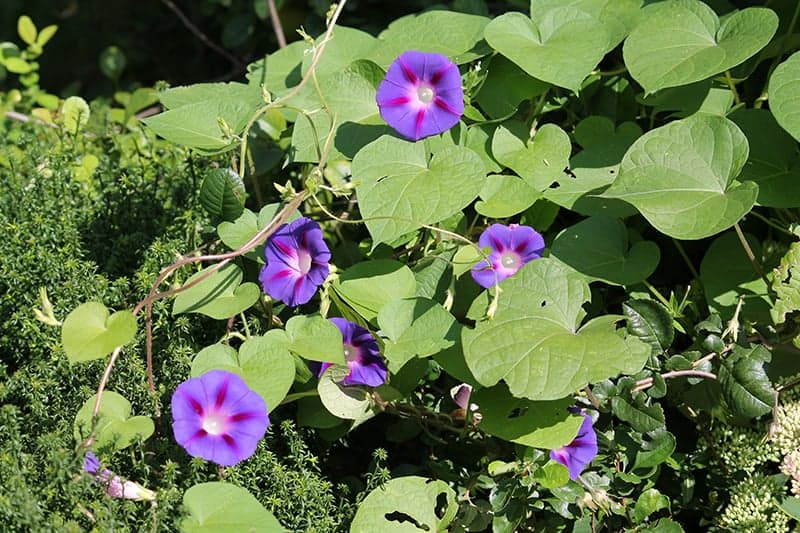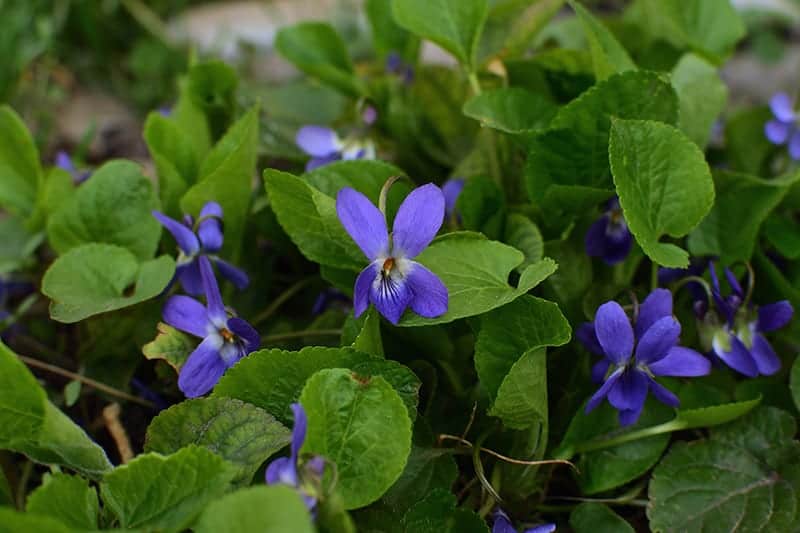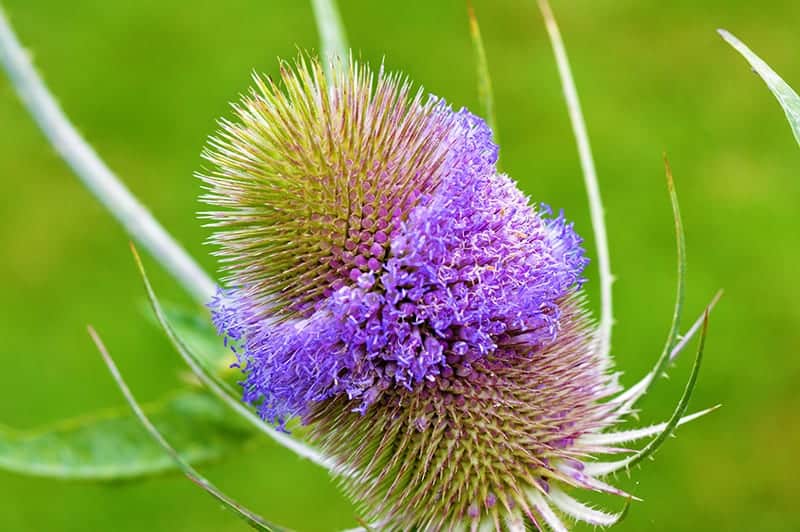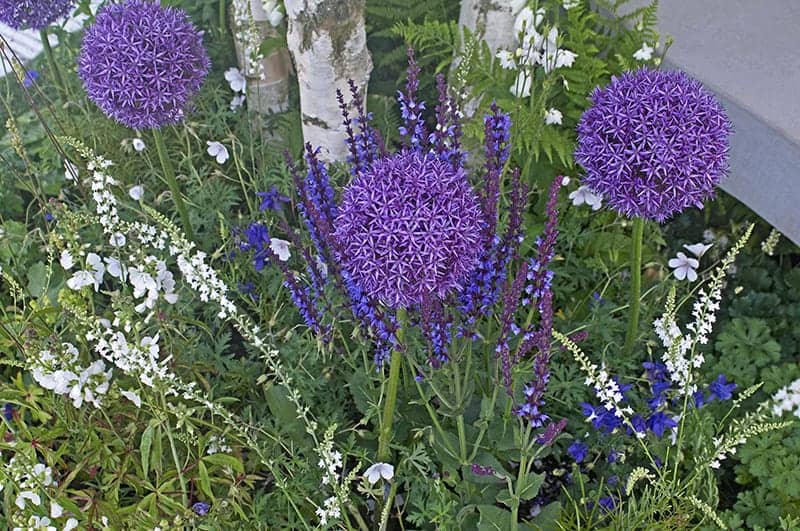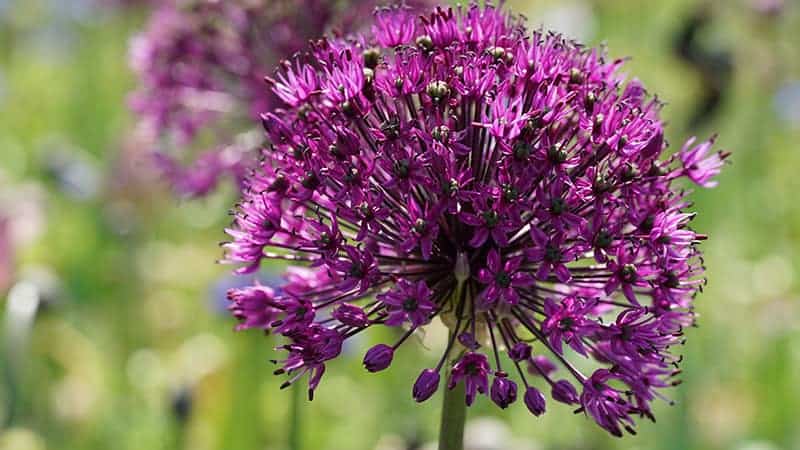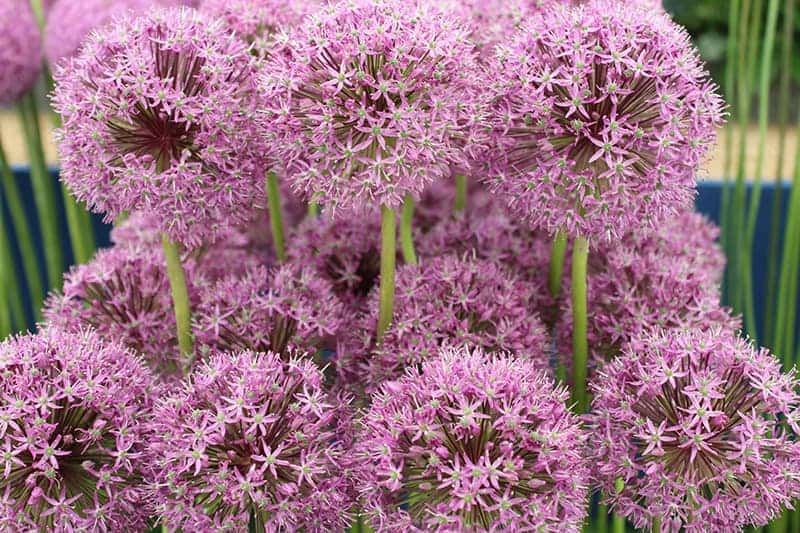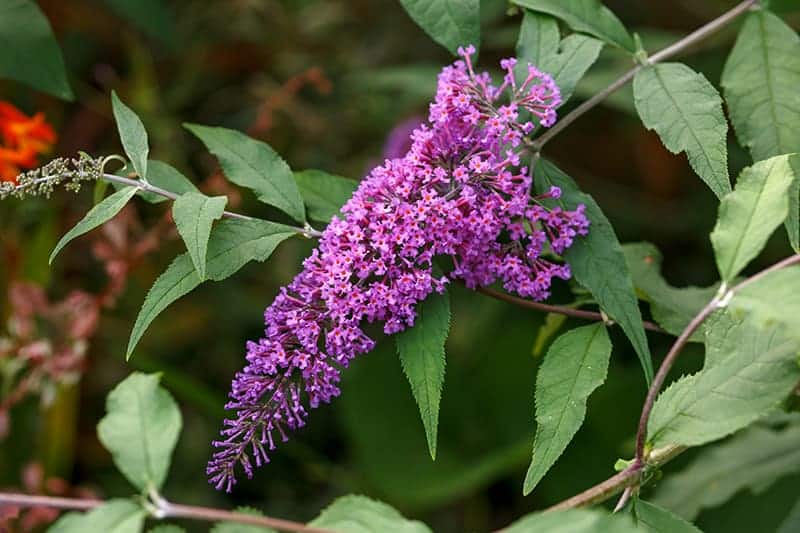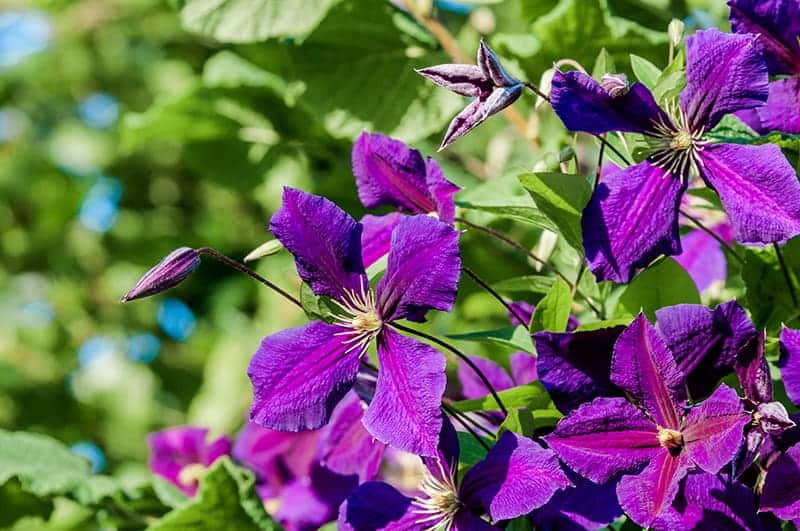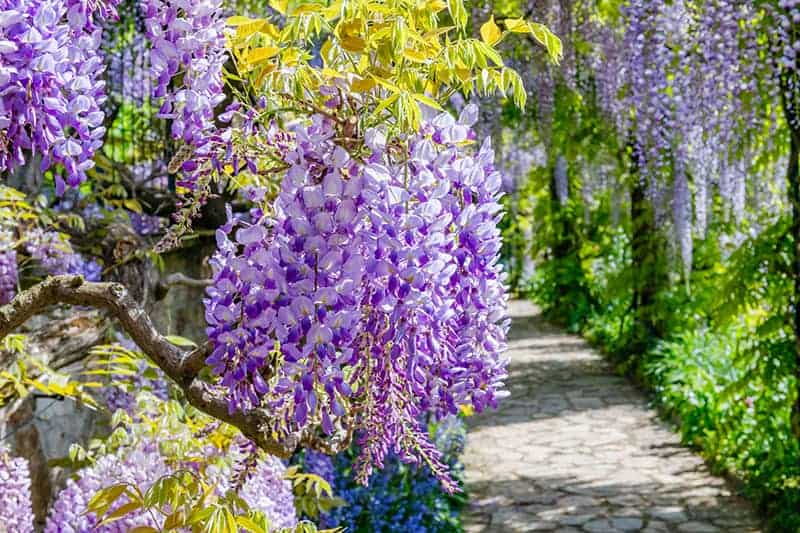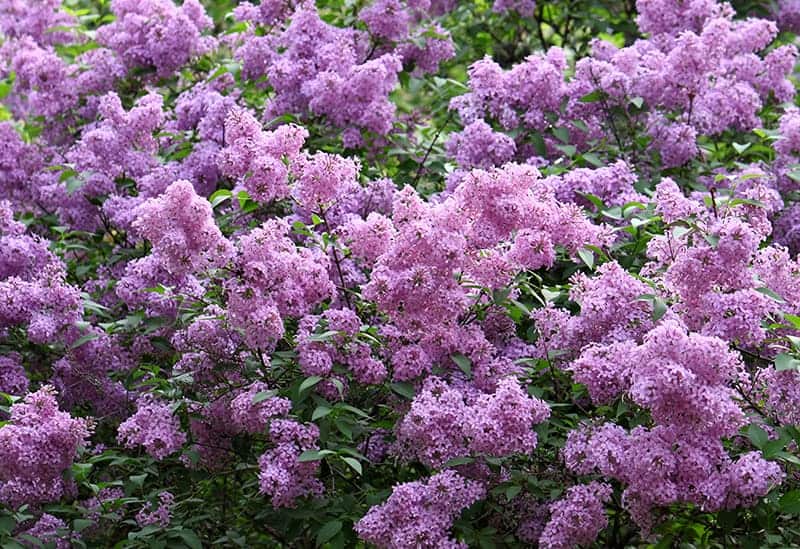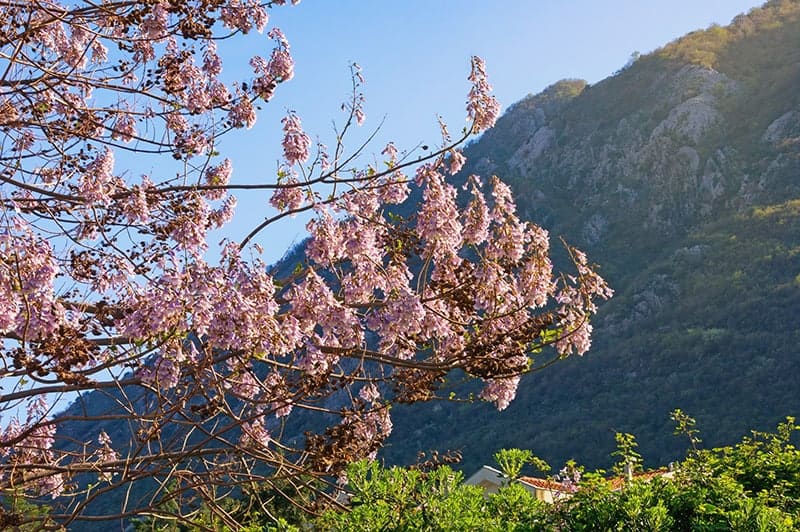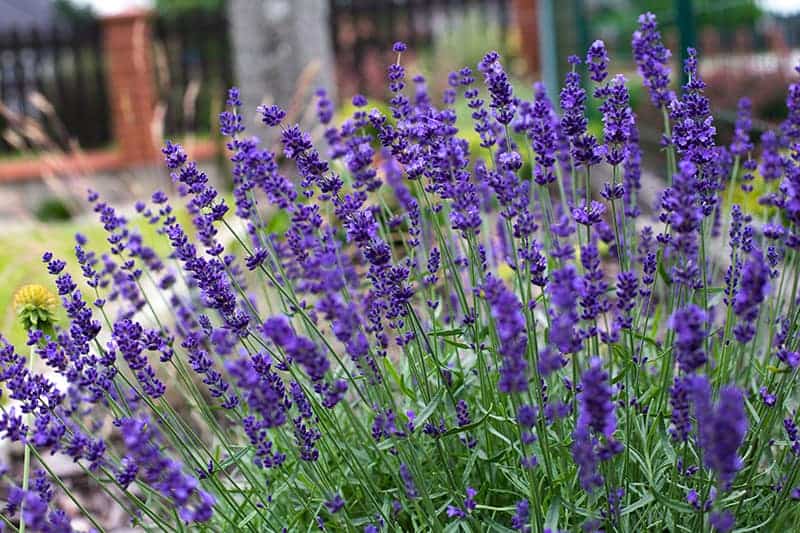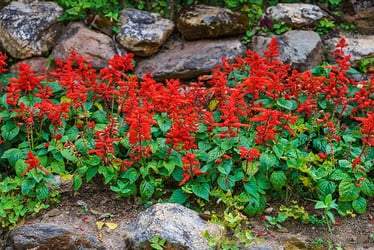- Home >
- Purple Flowering Shrubs
Purple Flowering Shrubs for Sale - Buying & Growing Guide
Do You Know Your Growing Zone? i Growing zones help determine if a particular plant is likely to grow well in a location. It identifies the average annual minimum winter temperatures across the U.S. provided as a map by the USDA.
11 Results
-
Growing Zone(s): 5-9$54.95
-
Growing Zone(s): 5-9 outdoors$179.95
$199.95Save up to 10% -
Growing Zone(s): 3-7$39.95
-
Best SellerGrowing Zone(s): 4-9$49.95
-
Growing Zone(s): 8-11$109.95
$129.95Save up to 15% -
Growing Zone(s): 4-9$54.95
$64.95Save up to 15% -
-
Sold OutGrowing Zone(s): 6-10$84.95
-
Sold OutGrowing Zone(s): 6-10$89.95
-
Sold OutGrowing Zone(s): 5-9$24.95
Purple Flowering Shrubs – Buying & Growing Guide
Purple is an elegant color that symbolizes royalty, mystique, creativity, and spirituality. It brings a sense of calm, mellows out the viewer, and increase positivity. Last but not least – purple and green are an excellent combo, making the purple especially magnificent color in the garden. There are plenty of purple flower varieties out there, covering many shades of the color. Also, purple flowers come in various shapes and sizes – from the tiny sage flowers to the big bloom clusters of Wisteria.
1. Purple Salvias or Sages (Salvia sp.)
There is a wide variety of decorative sages available for the garden – and many of them come in wonderful purples. All salvias have small clustered flowers in very vivid shades
1.1. Salvia pachyphylla
Salvia pachyphylla is a California native with lush clusters of lavender-purple flowers against evergreen silvery-green leaves. The fact that it comes from the Sunny state means that it’s resistant to heat and drought. Unfortunately, it is not common in gardens, so we can call it a rare, undiscovered gem of the genus.
Size: Height & Width (H & W): up 3 feet
Hardiness Zone: 6-9
1.2. Blue salvia (Salvia farinacea)
Blue salvia, native to North America, is probably the most common Salvia variety in gardens. What makes it a gardener’s favorite is its hardiness, drought tolerance, and a tendency to flower thought the summer. Foliage is of a deeper green color than other, silvery Salvia species.
Oh, and in case you haven’t figured out by now, Blue salvia flowers actually have a beautiful deep purple color.
Hardiness Zones: 8-10, but it’s regularly grown in cooler Zones.
Size: H: up to 2 feet tall, W: up to 1 foot
1.3. Clary sage (Salvia viridis)
Staying in the sage realm, but moving on from flowers – sort of. The vivid colors of the annual clary sage – which can be purple, pink, or white, don’t come from its flowers, but from the plant’s bracts. If you are into crafts, you will love this plant – the bracts dry well and are durable, so they are perfect to use in dried-flower crafts.
Hardiness Zone: Annual
Size: H: up to 20 inches, W: up to 10 in.
2. Catmint (Nepeta)
Here’s another very aromatic purple-flowered plant. Catmint is a bushy perennial which loves full sun and light, well-drained soils. If you cut back the first series of blooms, you will stimulate a second flush of blooms.
Besides being very fragrant, Nepeta is also rich in nectar and the bees love it. Also, the famous catnip also belongs to the genus and goes by the scientific name Nepeta cataria. While it has a relaxing effect on humans and is used for this purpose as an herbal tea, it makes cats go bazonkers.
Hardiness Zone: 4 – 8
Size: H: 10 to 24 in; W: 12 to 24 in
3. Morning Glory (Convolvulaceae)
Morning glory is a family of almost 1000 plants. Some of them are one among the most popular climbing plants, with beautiful trumpet-shaped flowers. They last only for the first half of the day – hence the common name – but it will make up their short life in the sheer number of flowers.
Similarly, common Morning glories are annual plants, but they are fast-growing, easy to sprout, and will reseed themselves. They are perfect to grow along trellises, fences or even walls. Another great thing about them is that they are a magnet for butterflies and hummingbirds. The plants are hardy and simply put, give a lot for the small amount of effort you put at them.
Morning glory seeds are toxic (although in large quantities), so be diligent about preventing accidental ingestion.
Morning glory species and varieties come in many shades of purple, blue, pink and white. There are several varieties of purple morning glory.
Hardiness Zone: 3-10
Size: flowers: up to 3 inches; vines: up to 10 feet
3.1. Grandpa Ott’s Morning Glory
Credit to F. D. Richards
Grandpa Ott’s is an heirloom coming from Germany. The trumpet flowers have an intense royal-purple color, with the addition of a reddish star-shaped throat, which is a stunning combination. The lush, deep green foliage makes a great background for the attractive flowers. I would dare to say that this is one of the most beautiful
3.2. Morning Glory (Ipomoea purpurea)
The common morning glory, or the tall morning glory. Like Grandpa Ott’s, it has a deep purple color, although it’s a bit lighter and less intense. Another difference is that the flower throat is white – which is the most common flower throat color in morning glories.
Note that I.purpurea has many varieties and can come in other colors as well.
Hardiness Zone: 3-10
Size: flowers: up to 3 inches; vines: up to 10 feet
4. Wild Violet (Viola odorata)
“Roses are red, violets are blue…” Well, not quite, because violets are mostly purple! These classic wildflowers never go out of style. Wild violets celebrate the coming of warm weather by beautifying temperate forests – and they can do the same in your garden. They are perfect for accenting your garden trees and putting some color and ground cover into the shady areas.
In the garden, violets pretty much take care of themselves. They like rich, forest-type soils. In the case of drought, water them a bit and that is all they need to survive. They can are perennial and will re-seed and reproduce via stolons. Control them, because they can spread and become invasive.
Hardiness Zone: 3-9
Size: H: 2 – 5 in
5. Teasels (Dipascus)
Teasels are wildflowers native to Europe, parts of Asia and Africa. They are mostly regarded as weeds and disliked as such for their spiny leaves and impressive height. That’s a shame since they can make great garden plants, both visually and ecologically.
A European native, Dipascus fullonum, has interesting spiked purplish flower heads which make great food for pollinators while fresh, and an important food source for native birds when it dries and turns into a seedhead. The fact that it covers both the needs of beneficial insects and birds makes it an ideal wildlife garden plant if you live in Europe.
Hardiness Zone: 5 (UK)
Size: H: 6 ft.
6. Lavender
Lavender is probably the most beautifully scented perennial plant out there. Its wonderful purple shade is so influential that it has a hue named after it – we all know the color Lavender.
A lesser-known fact might be that, since the genus Lavandula contains 45 species, there are many varieties of lavender you can grow – around 450 of them. Not all of them are purple, but a great many are.
In the Northern part of the globe, the two most common species are L. angustifolia – the English lavender, and Lavandula x intermedia (a cross between L. angustifolia and L. latifolia) – also known as Lavandin. Lavandins have longer stems and a latter blooming time than L. angustifolia.
Lavenders make wonderful additions to the cottage and Mediterranean-style gardens, as well as to wildlife gardens and public grow beds. They are also a great attractant to pollinators, including bees and bumblebees.
Hardiness zone: 4 to 9
Size: 20 to 24 in (H & W) with flower stalks. It might be significantly shorter when out of bloom.
7. Alliums
Allium is a genus that supplies us with our culinary staples – onion and garlic. However, that is not all. There are ornamental alliums which feature beautiful round blooms on a straight stalk. And guess what – some of its many varieties come in beautiful shades of purple.
Provide Alliums with a sunny spot sheltered from the wind – to avoid blowing away the flowers. They bloom in early summer and blossoms last for about three weeks. Pollinators, especially bees, love their flowers. Once the flowering is over, remove the flower heads (and read on to find out why!).
Hardiness Zone: 3-9
Size: H: 30-40 in
7.1. Allium ‘Purple Sensation’
“Purple sensation” features pink-leaning violet, vibrant heads. The variety blooms in summer. Experts recommend removing the seed-head instead of allowing re-seeding since offspring plants have paler flowers.
7.2. Allium ‘Purple Rain’
Allium “Purple Rain” is a cross between the “Purple Sensation” and A. Cristophii. It is has a huge purple ball of a flower head which can measure up to 15 cm in diameter!
7.3. Allium “Mars”
“Mars” has dark-reddish purple flower heads which are quite compact and mounted on 110 cm tall stalks – the tallest on this list. It blooms in late spring and early summer.
8. Buddleia
Buddleias are known as “butterfly bushes” – and not without a reason. They are one of the best plants to attract butterflies. There are about 100 species in the genus. Two best-known ones are the Butterfly bush (Buddleia davidii) which is suitable for cooler climates, and the Wooly butterfly bush (Buddleia marrubiifolia) that grows in warm climates. However, only Buddleia davidii ist typically purple.
Buddleia shrubs feature large flower clusters that are so heavy compared to the stalk that they have to fall over. They do best in chalky, lime-rich soils, and most have to be pruned in spring or summer.
Hardiness zone: 5 and above (B. davidii)
Size: H: 6 in – 16 in
9. Clematis
Clematis is one of the most beautiful vines. There are three main groups and hundreds of varieties to choose from.
Clematis climbers boast several notable purple varieties, with hues ranging from light violet to deep royal purple. Check out Clematis ‘Kingfisher’, Clematis ‘Picardy’, Clematis ‘Etoile Violette’, Clematis ‘Night Veil’, and Clematis ‘Warszawska Nike’ – and these are the summer varieties only!
Clematis vines are a bit more complicated to maintain at their best than most of the plants I previously listed, but it’s nothing that can’t be learned. And most importantly, their beauty is worth it.
Hardiness Zone: 4-9
Size: H: 2 – 5 ft; flower W: 4 – 6 in
All clematis vines love decent watering, having their roots in the shade and upper parts in the sun, and to be pruned to some degree. As for climbing, you will have to train them for the best results.
10. Chinese Wisteria, Wisteria sinensis
In the case of wisteria, you could say it’s raining purple! This delicious vine that belongs to the pea family is well known for its large droopy, large blooms (racemes). Native to China, it is grown around the world, and especially favored for the possibility of climbing complex structures such as arbors as promising for some permanent exquisite landscaping.
Hardiness zone: 5 to 9 (although upper parts of the plant can suffer diebacks from cold snaps in zones 5 and 6)
Size: H: 33 ft and over
11. Lilac (Syringa sp.)
Syringa is a genus of 12 small tree species native to Asia and Europe. Lilac is well known for its characteristic lush, dense, fragrant blooms – panicles made up of many small individual flowers. The fact that they are small, elegant trees make them ideal for adding some stories to small gardens.
Lilac trees don’t like to be pruned. They will respond to pruning by the vigorous growth of new branches and leaves, but with less or no flowers. Mature trees that haven’t been trimmed make the best bloomers.
Lilacs come in pink, white, bluish and a couple of shades of purple. In fact, there is a shade of purple called “Lilac”, named after the most common color of Lilac flowers
Hardiness zone: 2 – 7 (there are varieties that can tolerate zones 8 and 9)
Size: H: 6 – 32ft
12. Empress Tree (Paulownia tomentosa)
The Empress tree comes from China, and it has become widely popular for the amazingly swift growth, big leaves that provide massive shade, and lush light-purple flowers.
However, be very careful if you want to plant it. Paulownia has proven to be a persistent invasive species and considering its fast growth, it has a great potential to choke out native species. As a solution, buy hybrids that are sterile.
Hardiness zone: 5-9
Size: H: 33–82 ft
To Take Away
I hope you have enjoyed this article on the most beautiful plants with purple flowers. If you are a fan of gardening and color purple – the news is great. Purple is a common color of flowers, and there is a variety to choose from.
From annuals to perennials, to long-living plants such as lilacs; from low ground covering wild violets to vines such as clematis to a full-scale tree Paulownia – you could make your entire garden purple without it becoming boring!










